Student Academic Evaluation and Advising System Capstone Project Document
Introduction
In this generation, everything evolve from manual to computerized system. To provide an efficient products, services, computation, analysis, etc., That may help students in their everyday routine. The proponents observed that the ABC Company are evaluating the students manually.
Evaluation is the process of interpreting a measurement or aggregate of measurements, by means of a specific subjective value or set of values to determine the degree to which the measurement represents a desirable condition. It consumes a lot of time and papers in conducting a student evaluation system. Unavoidable errors could be encountered due to the manual procedure.
Therefore, the proponents created a Student Academic Evaluation and Advising System, this web based system includes systematic process of evaluating the subject needs of the students. We hope to develop an automated student academic evaluation and advising system which will help the students also the chairperson, to assist the students by helping them to determine the subjects that they need for their evaluation. In addition, this system will enhance the capability of the field of evaluation to develop an effective academic evaluation system for the Bachelor of Science in Information System students, that will includes the accountability and responsibility in ensuring that students are provided with high-quality evaluation and advising services.
Background of the study
ABC Company Campus Student Academic Evaluation and Advising System the current evaluation is done by the Department Chair and will be use as basis for the registrar’s office to assist there subject.
The Web-based Student Academic Evaluation and Advising it served as one of the sources to provide data for the improvement of our school and learning. In addition it will give the school and the Department Chair an easy way in evaluating and advising the students within the school facilities. The information is generated in the subjects record for both the student and administrator. Manual system is retrieving, maintaining, security and filling of records consume lot of time and effort. There are some cases wherein records are being misplaced due to huge amount of paper that been used for many years. Furthermore, these files were only kept in envelope, folder or wooden racks. There are also instanceswhen the right information is given to the wrong person, which may affect quality of service.
Due to the profound effect of the internet in this age and time, more schools and universities are leaning towards newer technological advancements and use it for profit or an improvement as a whole. This area includes a general consideration of the learning outcomes that a subject hopes to achieve in its students and the appropriateness of the curricular objectives and content in developing these outcomes.
Statement of the Objective
This study aims to develop an Student Academic Evaluation and Advising System with the following objectives:
- To Develop an automated evaluation system for Bachelor of Science in Information System Students that can;
- Promote a secured academic evaluation and advising system.
- Maintainability of the record of every Information System Students.
- Allow students to view their own records.
- Generate evaluation reports for the students.
- Evaluate the acceptability of the system using ISO 92411-11 to which a product can be used by specified users to achieve specified goals with;
- Usability as an outcome
- Effectiveness
- Efficiency
- Satisfaction
Conceptual Framework
The goal of this system is to have a automated system that can evaluate student subjects and produce evaluation report in a particular subject and kept students information for security purposes.
Scope and Limitation of the Study
Scope
The study covers the ABC Company – Fortune Towne Campus, Bachelor of Science in Information System students only. This study focuses in evaluating the subject needs of the students from 1st to 4th year, during enrollment process. This study will help the department chair in evaluating the students to change the manual process of our school. Furthermore, with this system, the proponents will develop an automated system to help the department chair and the students during evaluation to provide appropriate subjects for every information system student needs for that semester.
Limitation
This system can generate evaluation report and provides subject needs, that can evaluate the students by the Department Chair. And it is only limited to ABC Company -Fortune Towne Campus, Bachelor of Science in Information System.
Significance of the Study
This study is beneficial to the following:
Chairperson. The study will help lessen the task of the chairperson in evaluating the academic requirements of the students. Eliminate redundant filling-up of evaluation form and erasure.
Students. This system will provide the students fast and easy transaction in evaluating their subjects.
The Proponents. This study is useful for the proponents. For they have applied programming languages they have taken throughout the course. In the development of student academic evaluation and advising system; that provides a systematic process of evaluating students. As it, alter the manual processing to a computerized system that is user friendly.
Future Researchers. This system will serve as guide for the future researchers. In order to be aware and knowledgeable of the process involving in developing a system. That will also, serves as their cross-reference that will give them an overview of the student evaluation and advising system.
Definition of Terms
Course. Conceptually, Courses are designed for continuing personal development and are offered by a number of leading universities, schools, and other educational institutions around the world. Courses can last from a couple of days to a couple weeks or even months, depending on the subject of the course (Gonzalez, Lopez, & Morales, 2018).
Operationally, Courses develop in your tertiary years that will help you improve your skills and knowledge. Specifically must choice course that is fit for your capacity in order for you to fulfill your goal of development.
Section. Conceptually, it helps to facilitate, initiate and co-ordinate the academic work of the Institute, particularly the learning and assessment of students. It acts as the repository of grades and academic records of all students (Assam, 2015).
Operationally, Section is the tools of the institute to assist the students in there learnings.
Subjects. Conceptually, subjects are a part of sentence that contains the person or thing performing the action in a sentence (Walden, 2017).
Operationally, subject is the point of the topic that being discuss.
Semester. Conceptually, is divided into fall and spring semesters of approximately 15 weeks each and summer sessions of varying length. The last week of the fall and spring semesters is set aside for final examinations (Burwell, 2019).
Operationally, it is a quarter system that divides the academic year into two sessions which is; 1st and 2nd semester.
School Year. Conceptually, the months of the year during school are open and attendance at school is required (Collins, 2019).
Operationally, school year is a period of time which schools, colleges and universities use to spend their time for studies.
User. Conceptually, is an entity that has authority to use an application, equipment, facility, process, or system, or one who consumes or employs a good or service to obtain a benefit or to solve a problem, and who may or may not be the actual purchaser of the item (Hersey, 2019).
Operationally, user means is an individual who uses a computer. That includes the related links, information, and terms.
Curriculum. Conceptually, refers to the lessons and academic content taught in a school or in a specific course or program (Richardson, 2015).
Operationally, it is one of the school’s academic requirements, which defined as the courses offered by a school.
Chairperson. Conceptually, the person in charge of a meeting or organization is referred to as the chair (Farlex, 2019).
Operationally, chairperson will be the one to evaluate students.
Review Of Related Literature
This chapter includes the list of related studies and literature from both local and foreign studies that will developing the web based system for Student Academic Evaluation and Advising System, that will serves as guide for the researchers that help in developing the information that are relevant and similar to the project.
Local Related Studies
Web-Based AcademicAdvising System
This study focuses on the overview of the development and implementation of a new model of e-Academic Advising System as a web-based application. The proposed model attempts to develop a model that the student and department chair can access to follow-up the student complaints and suggestions. Also, the students who registered can through evaluate, Advise & suggest in any subject. Finally, the Department Chair can receive a evaluation reports to follow-up his department. Therefore, a need for a system that could detect students, problems and provide them with suitable feedback is raised. The aim of this study is to implement a system which facilitates and assists academic advisor in their efforts to providing quality, accurate and consistent evaluation services to their students; also, to explore the design and implementation of a computerized tool to facilitate this process (Afify, 2017).
In addition, the required methodologies used in the development of the Academic Evaluation and Advising System, it has been shown that Academic Evaluation is a process more than a final product or system, a technical vision for Academic Evaluation System has been provided. The e-Academic Evaluation web-based developed and implemented by “Ruby on Rails” as a Web framework which runs via the Ruby programming language and “PostgreSQL” as a Database Engine.
Web-based Enrollment System for VPS (Metro, Manila)
Based on the researcher, a web based enrollment system for Veritas Parochial School(VPS) in web based enrollment system, Manila was developed to help its students enroll in a more efficient way without the hassles of waiting long hours in filling out forms, which sometimes become redundant, or to stand in line and pay at the cashier. It is with the Web-based Enrollment System for VPS that this new style of enrollment may be achieved. This new type of system offers its students new options for enrolling at VPS. By logging on to VPS website, one can register and enroll subjects for a school year. With these, all the students are required to fill out certain forms that do not take more than a few minutes to accomplish. The system stores its records in the school database for future references. Confirmation of the transaction made by the students need to be verified, the payment of tuition fees must be made in the schools registrar. The students may also browse the web site of VPS and he can check his current account (Agustin, 2016).
Department Chair evaluate the students
Advisor evaluates the students generally provide information about the process of evaluating and advising the students. First, the students will get their grades on the registrar. Second, students will get the evaluation orm on the registrar. Then, Students must go to Department Chair and present the grades. Third, the Department Chair will immediately evaluate and advise students. Lastly, a student gets the evaluation report (Srebnik, 2016).
Foreign Related Studies
This chapter includes the list of related studies and literature that develop different development related to study of the Student Evaluation and Advising System, from the foreign studies as the proponents serves as the researchers guide in developing the project.
Evaluation of Information Systems
Evaluation of Information Systems is a significant matter for study as well as practice (Irani et al. 2015). As Informations Systems has become more pervasive, complex and interactive evaluation emphasis has, to a degree, shifted to concerns with how and to what extent IS’s serve organizational change (Klecun and Cornford 2015).
In order to direct the process of management information in systems in the right direction, the activity of evaluation provides supervision. Evaluation of Information System performances means evaluation of performances in hardware, software, computer networks, data and human resources. The main objective of Information System functionality performances evaluation is upgrading and especially improvement in quality of maintenance. Numerous information system evaluation methodologies are proposed in management studies.
The consequence of such an assessment can then be used in the decisions of an organization when managing their information systems. Throughout the life cycle of information system organization has to take important decisions. The most obvious of which are the go/no-go investment decisions (Cornwallis, 2019).
Academic Advising Evaluation
Academic advising is an important activity of an academic institution. It guides the students to explore potential careers, academic disciplines and opportunities in the college environment (Nasr, 2017). Evaluating the success of Information Systems has been recognised as one of the most critical issues in IS field. Several conceptual and empirical studies have been conducted to discover this issue. An enormous debate continues for the appropriate set of variables that can be used to determine the users’ perception of the success of Information systems.
Evaluation results can also support advisor to merit recognition and raises, promote budget changes or increased administrative support, point out areas of need for in-service training, and determine effectiveness of students evaluating and advising programs (Debra S. Srebnik). In addition, advising evaluation can be used when developing a needs assessment, reorganizing personnel, and planning future administrative policy (Grites & Kramer, 1984). Particularly in times of “fiscal restraint, evaluation is necessary to determine program effectiveness for the users of services and for the institution” (Frisz&Lne, 2015).
1.2.3 Student Evaluation System
According to Agustin (2016), a Student Academic Evaluation and Advising System helps and provides efficient and reliable services to the students, department chair and faculty. Furthermore, this system will improved the process evaluation and advising in terms of searching of subjects schedules. A computerized system for BSIS Students of ABC Company shall result to a significant increase in the number of enrollees based on DCNHS (2016) in his study entitled “Student Academic Evaluation and Advising System” cited that the manual process of evaluation and manual handling of information and reports of the students is very laborious one.
The proponents proposes to develop a network based system evaluation and advising system to the said school to solve the huge amount of task of the Department Chair. This system intend to lessen the time that consume and effort exerted by both student and Department Chair for the evaluation process. The basic feature of this study is after the storage and access of retrieving and updating the data. It is also made to give accurate evaluation and reports of every student and for easy and fast way of evaluation. Soria (2006), in her study said that with the advancement of technology, devices, machines were improve, developed and inverted to cope up with the need of new world. There are different systems designs for reliable, efficient and very useful to the user.
This study is the first to address a Student Academic Evaluation and Advising System of BSIS Students from a Department Chair perspective at a ABC Company . The perceptions of the Student Evaluation process in terms of; (a) their paper-based vs. computerized-format preferences; (b) their beliefs about the process; (c) the standards they adopt in the evaluation; (d) the fruitfulness of Student Evaluation outcomes; (e) their opinions about the evaluation instruments currently used at their institutions. In addition with this student evaluation and advising is an important and time-consuming effort in academic status. This system aims to provide the reader with a comprehensive background for understanding current knowledge on Academic Evaluation System (AES) and its impact on learning (Francis, 2018).
Related Systems
This related systems will based on the foreign and local studies that includes the past and the present process of Student Academic Evaluation and Advising System. This will also help the proponents to understand other different components of the system.
This synthesis focus on the student academic evaluation of subjects at ABC Company and discusses the results of the articles appearing in this study. The discussion concerns the role of evaluation in school governance, the value of evaluation for foreign and local school development, the constitutive effects of evaluation, that explains the present results, of knowledge produced by evaluation can be used, and methodological issues. The proposed Student Academic Evaluation and Advising will ensure the reliability and efficiency of the system. Whereas, non automated procedure means that the proponents are relying on a current process that cause of inefficient in data gathering, storing, and processing. This automated system will help the students in Bachelor of Science in Information System in handling the academic evaluation in a more effective and efficient way.
Furthermore, the mentioned literatures above, this system help the Chairperson to manage the data gather for evaluating of the students for the system itself.
Methodology
The proponents will be using prototyping model in developing this system. In this model the software development team, clarify requirements and /or design elements, that generate mockups and prototypes of screens, reports, and processes. And it allows the software engineer to give some insight into accuracy of initial project estimates qand wether the deadlines and milestones proposed can be successfully met. In this chapter includes the research method and the methodology implemented for this study. The purpose of this chapter is to explain the requirement gathering, quick design, build prototype, user evaluation, refining prototype, proponents product, and the process of deliberating the system.
Requirement Gathering and Analysis Phase
This represents the integrations, input and outputs to existing systems and what requirements are needed currently, in the future and integrations between systems. The user is interviewed in order to know the requirements of the system.
Quick Design Phase
This represent quickly complete the design of the system and build the software based on requirements gathered in the earlier stage.
Building Prototype Phase
The proponents gathered all the data based on the information gathered from quick design that could build a quick design modified to form the first prototype, which represents the working model of the required system.
User Evaluation Phase
In this phase the proponents proposed system presented to the user for consideration through evaluation of the prototype and recognize the strengths and weaknesses. Comments and suggestions that we collect from the users for the improvement of the system in order to meet the objectives. The proponents allow the user evaluates the prototype and if he/she is not satisfied, the current prototype is refined according to the requirements. Then the proponents will produce a new prototype.
Refine Prototype Phase
If the user is not satisfied with the current prototype, you need to refine the prototype according to the user‘s feedback and suggestions.
This phase will not over until all the requirements specified by the user are met. Once the user is satisfied with the developed prototype, a final system is developed based on the approved final prototype.
Engineer Product
When the requirements are completely met, the user must be accepts the final prototype. The proponents developed a user-friendly system that could minimize the use of paper materials.
Technical Feasibility
Development
Table 1.1 System’s Development Hardware
Development Environment
The main purpose of this study is to develop a student academic evaluation and advising to evaluate the subjects of every Bachelor of Science in Information System Students. With this system it is beneficial to the students and the chairperson.
Program Development
Front End
HTML
Hypertext Markup Language uses to structure text into headings, paragraphs, lists, hypertext links etc. This makes the document easier to read and edit. And it is a convenient way to automatically fix markups errors is to use HTML (Shannon, 2018).
CSS
The proponents will be using Cascading Style Sheet that will design or our proposed system because it is simple to use in mechanism for adding style like fonts, colors, spacing, and etc. And for presenting documents written in a markup language (Bos, 2019).
Bootstrap
Is the most popular CSS Framework for developing responsive and mobile-first websites. Bootstrap has become an essential a tool for front end developers (Ouellette, 2017).
JavaScript
Is the programming language of the web. JavaScript allows you to respond to a user’s input in the form of text, buttons selected, or mouse clicks, and can generate a response to a user’s computer (Brightkite, 2019).
Back End
PHP
PHP is a server-side scripting language designed for web development but also used as a general-purpose programming language (Ledorf, 1968).
MYSQL
MySQL is an Oracle-backed open source relational database management system (RDBMS). It is often associated with web applications and online publishing, This system managers bsed on Structrured Query Language (SQL) as a localhost that allows front end perform its functions and operations (Rouse, 2019).
Feasibility Schedule
The feasibility schedule contains the record of the amount of time the proponents spent on the system.
Gantt Chart
The following tables show the Gantt chart of the task that have been done by the proponents with the time allotted for the establishment of the entire system.
Work Breakdown
The table 2.0 shows the Gant Chart of task that have been done by the proponents with the time allotted for the establishment of the entire system. Gant Chart Helps the proponents to define the flow of activities in the proposed system to estimate the time will take to complete the system.
Architectural Diagram
This figure shows the architectural diagram of the proposed system. It includes the network structural design the system wherein the users can access the system through web based.
Cost Benefit Analysis
Cost benefits analysis (CBA), is an estimated cost and sum of the amount cost or benefits associated with the system, to determine whether the company gained benefit from the system.
| Development Cost | Quantity | Unit | No. of Months | Cost | Total Amount |
| Computers | 2 | SET | N/A | ₱ 10,000.00 | ₱ 10,000.00 |
| Printer | 1 | SET | N/A | ₱ 3,000.00 | ₱ 3,000.00 |
| Programmer | 1 | N/A | 6 | ₱ 8,000.00 | ₱ 48,000.00 |
| System Analyst | 1 | N/A | 6 | ₱ 15,500.00 | ₱ 90,000.00 |
| Subtotal | ₱ 151,000.00 | ||||
Entity Relationship Diagram
The Entity Relationship Diagram shows the relationship of entity sets stored in database. An entity in this context is an object, a component of data.
Context Diagram
The diagram, is drawn in order to define and clarify the boundaries of the system. It identifies the students, evaluator, faculty, administrator, and encoder the flow of information between the system.
Date Flow Diagram
This figure shows the data flow of the proposed system. The Evaluator will receives the data, which is the student information; send by the students. The students will encode grades and create user account at the same time.
Data Dictionary
Presentation, analysis, and presentation of data
This chapter exhibits the results of the User’s Syrvey conducted for the ABC Company – Fortune Towne Students Academic Evaluation and Advising System to the chairperson and students of the Bachelor of Science in Information System’s.
The dashboard shows the presentation of subject summary, student status and the total number of registered per semester.
Presentation
The proponents explain and demonstrate the system’s functionality to be evaluated by the selected respondents.
The researcher conducted a survey with the use of Computer System Usability (Lewis, 1995). Computer System Usability (Lewis, 1995) refers to the degree to which software can be used by specified consumers to achieve quantified objectives. It also refers to the ease of use and learn ability of a system or software in connection with the user. The questionnaire designed to be completed by administrators, registrar, students, and evaluator of a student academic evaluation and advising system. The tool includes questions to assess the usability of the system systems.
Characteristics of the Respondents
The study’s population consist the chairperson and the students under the Information System Department in ABC Company – Fortune Towne Campus.
Table 2.5 shows the number of respondents. The Bachelor of Science in Information System Student have a 29 and 1 Chairperson. The overall proponents got a total of 30 respondents inside the school area in regards to the User’s Acceptance Survey.
Interpretation of Data
The computer system usability has a mean of 3.62 interpreted as Strongly Agree. The results showed that the proponents believed that the system can be used by students to achieved quantified objectives or can provide the students ease of use when using the system software. It can also be interpreted according to ISO 9241-11, the extent to which a product can be used by specified users to achieve specified goals with effectiveness, efficiency and satisfaction in a specified context of use.
A table showing the mean results of Perceived Usefulness and Ease of Use.
The mean results of Computer System Usability. The computer system usability has a mean of 3.62 interpreted as Strongly Agree. The results showed that the proponents believed that the system software can be used by students to achieved quantified objectives or can provide the students ease of use when using the system software. It can also be interpreted according to ISO 9241-11, the extent to which a product can be used by specified users to achieve specified goals with effectiveness, efficiency and satisfaction in a specified context of use.
Summary Of Findings, Conclusion And Recommendation
This chapter contains the overview of the summary of findings, the conclusions and the recommendation of the Student Academic and Advising System for the system study.
Summary of Findings
The proponents conducted a survey to develop an Student Academic and Advising System that its purpose is to eliminate the paper-based of finding data, helping students to assess and evaluate their subjects in faster, efficient, and effective ways.
The descriptive method of research was utilized, and the survey technique was used for gathering data. A questionnaire served as an instrument for the collection of data.
Conclusion
- The system it should be beneficial to the desired school to help lessen the work of the chairperson for assessing the students.
- Eliminate the paper-based filing of the students records and reduces the time consumed in the process that will result in high productivity.
- This system is valuable to the students that can able to view their own records if they passed, dropped, or failed the subjects.
- Based on the findings that will be concluded in this system to be implemented in this school will be on the level of the users experience in the terms of the effectiveness of the system was obtained, interpreted as satisfied in generating complete report and data in terms of student subjects and their passed, failed, dropped subjects to be evaluated.
- As to the experience of the user in the efficiency category, it obtained was interpreted as satisfied to the user-friendly in term of the effectively on guiding students of their subjects selections.
Recommendations
From the findings and conclusions of the study, the following recommendations are suggested:
- Deployment of a new mobile-friendly subject evaluation software system to replace a manual process to automated system; and
- Ongoing assessment of the student satisfaction with the new software system and subject evaluation form.
- The registrar must be released the grades on time. So that, the students can’t delayed during the evaluation.
- To the future researcher need to integrate to the registrar to the system with scheduling; and the registrar should be input the gardes directly to the system.
Credits
Eguid, Andrian Bernard, M.
Kho, Andrea Mae, C.
Tatang, Shiela Mae, V.

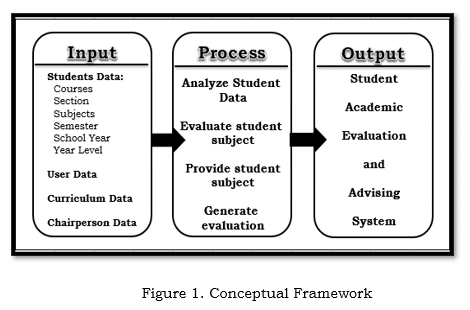
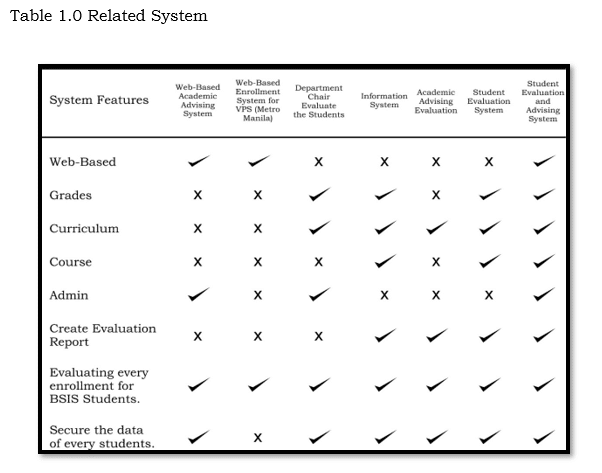

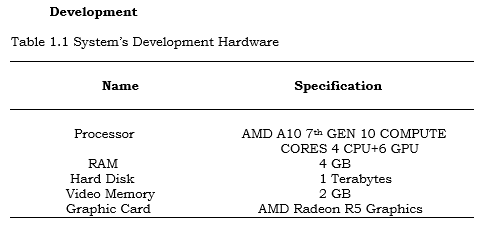
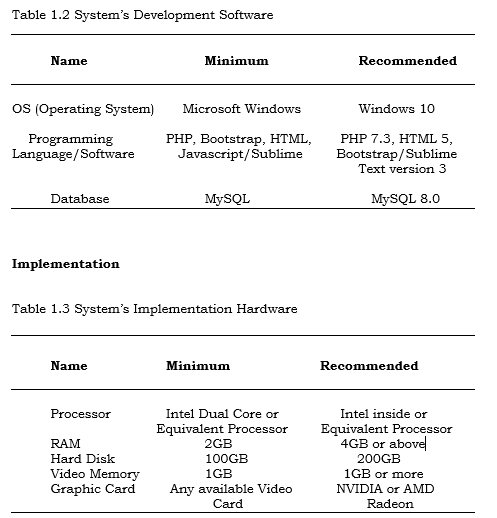
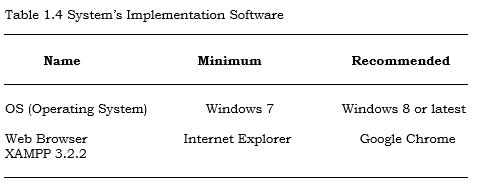
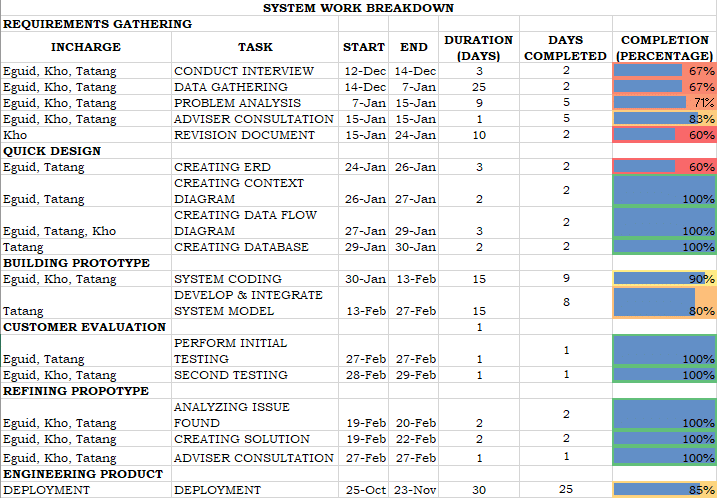

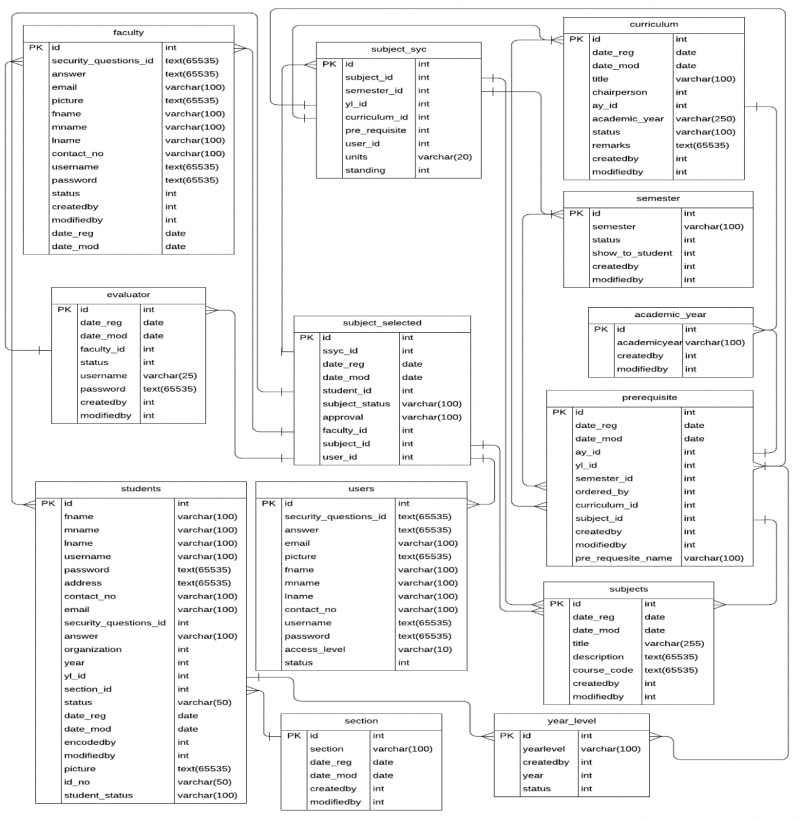
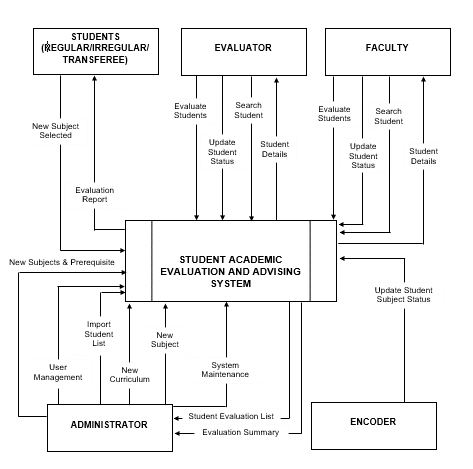

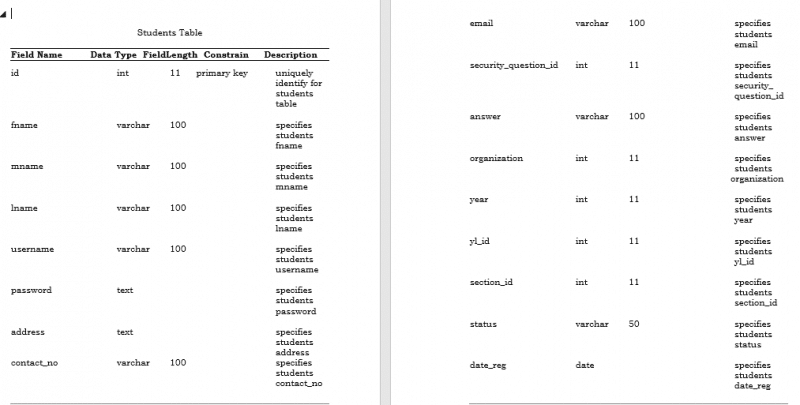

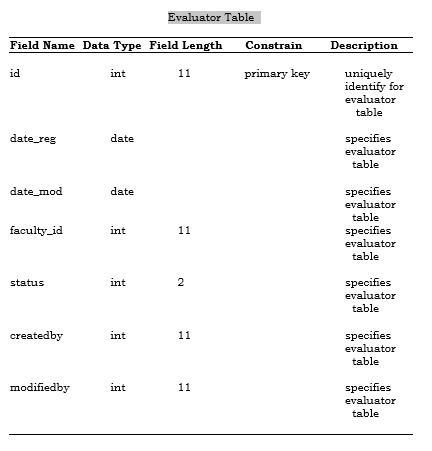

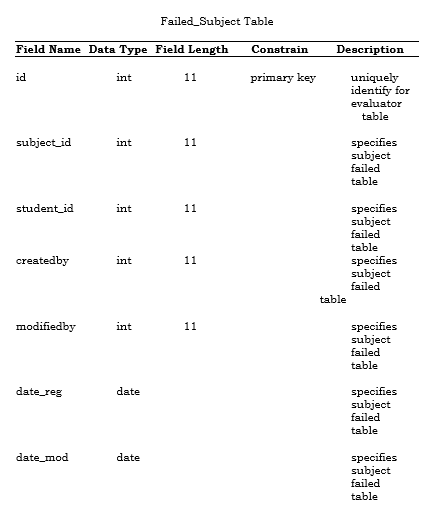
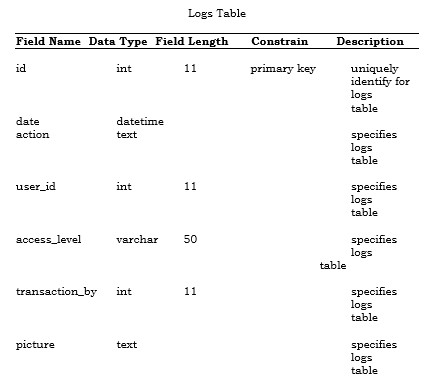



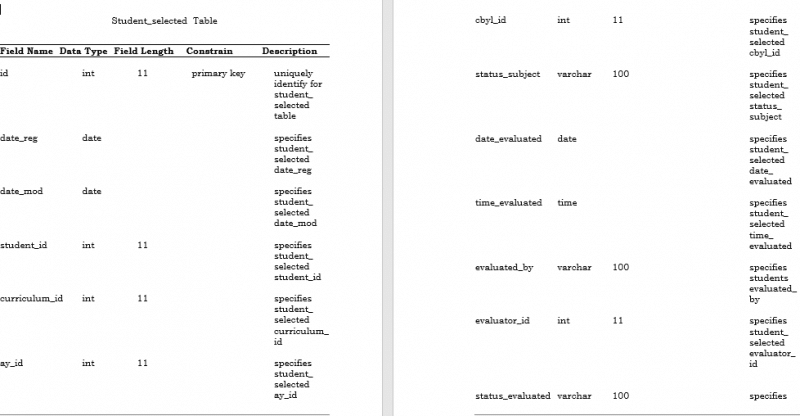
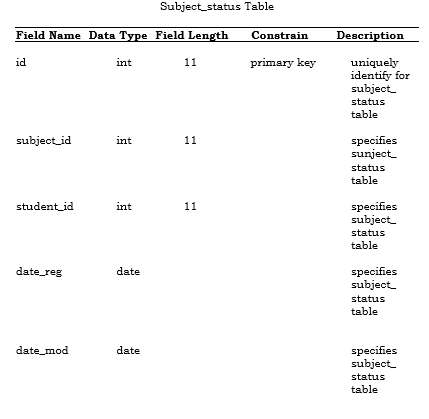
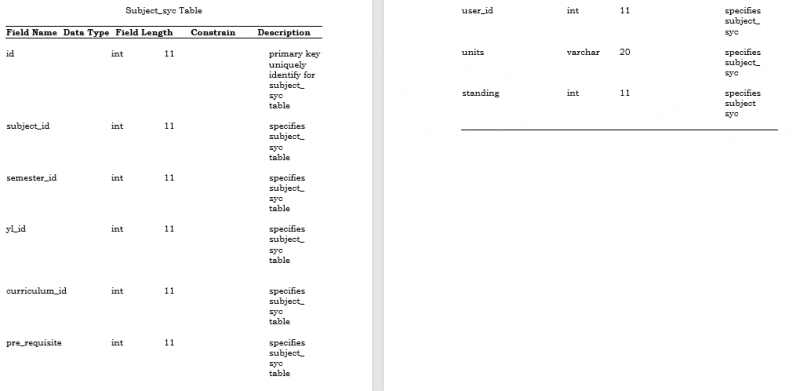
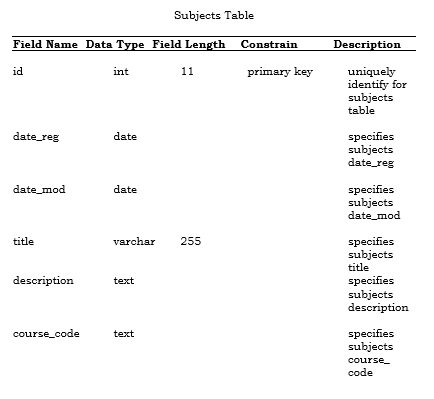

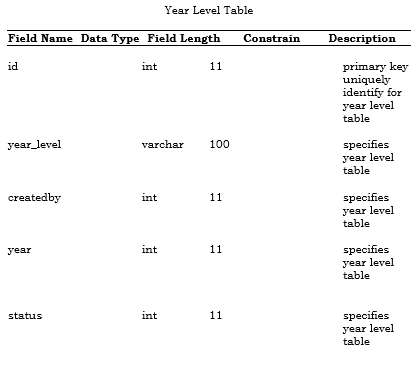
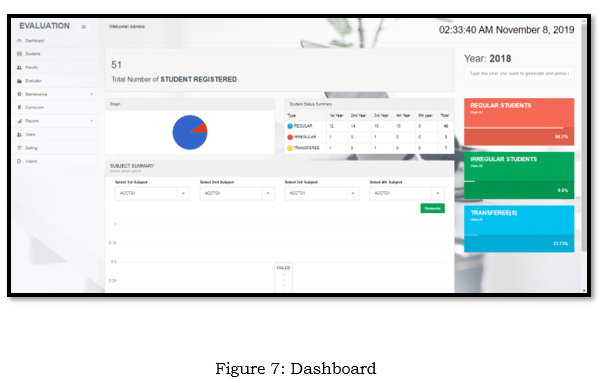
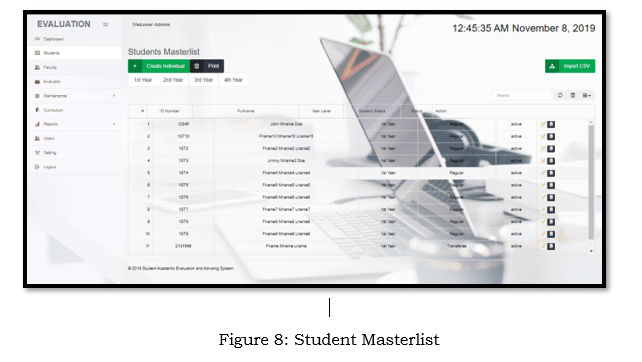
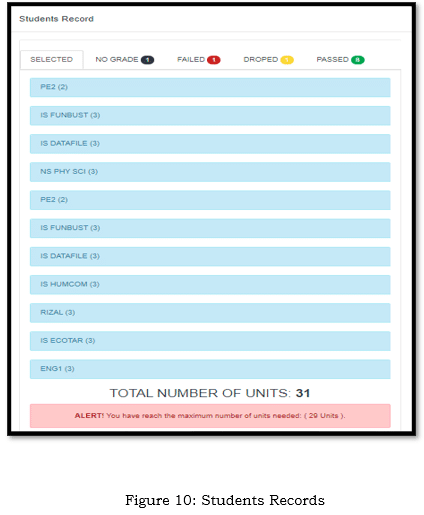

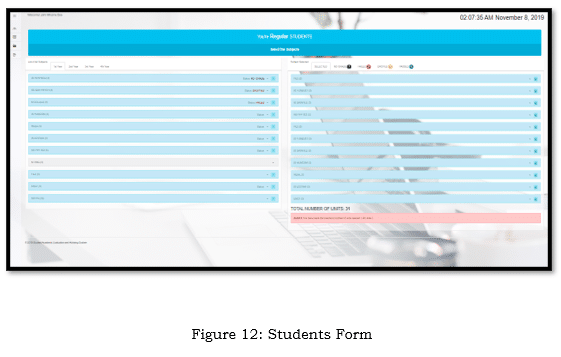

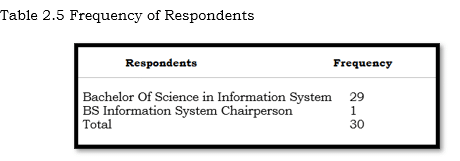




Leave A Comment
You must be logged in to post a comment.